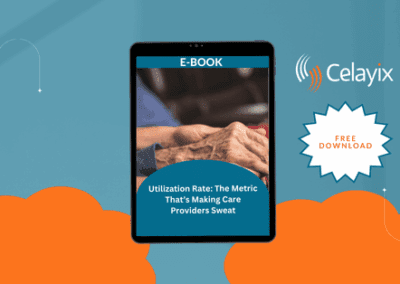No shows, last-minute sick calls and excuses… sound familiar? As a scheduler, we probably don’t have to tell you why absence management is important for your business. Here are just a few reasons why illegitimate employee absences can damage your business.
- Negative impact on customer service
- Fosters a bad workplace culture
- Overtime costs of hiring the same employees to work more shifts
- Negatively affecting your bottom line
If you are experiencing these issues then you need to put absence management strategies in place. In this blog post, we dive into just this and help you counteract the effects of absences.
What causes absenteeism?
Firstly, let’s take a look at what actually causes absences. Legitimate absences happen and that’s fine. C’est la vie as they say. You just need to have the right strategies in place to help counteract the effects. Legitimate absences can be caused by:

- Sickness
- Emergencies
- Employee Burnout, stress, low morale
- Workplace bullying and harassment
- Personal stress
- Injuries
Illegitimate absences can be caused by:
- No shows
- Fake sick calls
- Disengaged workers
- Job hunting
Here’s how to implement absence management strategies for your business
We know legitimate absences like the above happen all the time, and that’s okay. When your team members are genuinely sick or have a family emergency, allowing absences is fine. You need to understand people’s circumstances and use discretion in allowing them time off.
Put a policy into place as to how many days employees can take off for sicknesses or personal days. Obviously, in some cases, this may need to be adjusted slightly, but it is effective to have a starting point.

When creating your schedules, aim to build flexibility for your workers. With Celayix, you can use self-scheduling so workers can fill their own shifts. This means employees are working hours that suit them, and it will lead to fewer absences. Ensure you communicate with your team and encourage them to give you enough time to adapt their schedule when required.
Finding Replacement Strategy:
Not only is it frustrating for the company to be dealing with constant employee absences. It is also extremely annoying for their colleagues as they are the ones who are left to pick up the slack. Constant absences leave the workplace understaffed and the employees overworked. This can, in turn, create a poor workplace culture.
A key part of your absence management strategy should be how you find replacements for absent workers. Employee scheduling software such as Celayix has a Find a Replacement tool feature that can be used for this. With this tool, instead of going into panic mode when you get a last-minute sick call from your employee, you can simply find a replacement staff member. You can set up prerequisite rules so only other employees with certain qualifications will show when you’re searching. This ensures you’re not wasting time looking through unsuitable team members! Once you have your rules set up, for example, a security guard needing firearms training, you’ll save hours calling employees to fill your shifts. Instant communication is also vital here. No more ringing around employees. Instead, you can send them an instant notification to request a shift from them. It’s that easy!
Communicate with your employees:
If absenteeism is a regular occurrence for your company, then you should spend some time trying to find out the root cause. There may be a common thread amongst your workers that you’re unaware of and is causing them to be absent from work. For example, there may be bullying happening in the workplace by a colleague or manager. You can send out anonymous surveys to your teams to find out why absenteeism is a problem. You should also talk with the employees left to pick up the slack from absent employees. Ask them what they need and how you can support them if they are working too many hours.
Track employee time and attendance
Keep track of employee time and attendance and note all absences. This is another key part of your absence management strategy so you can identify trends and understand why these absences are happening. If the same employee is constantly absent or late to work, you need to have this information on file for any disciplinary meetings that will have to happen later down the line. When you are tracking employee time and attendance, it will be easy to spot reoccurring patterns such as an employee always ringing in sick on Monday mornings or never working closing shifts etc. Using Celayix will help you spot these patterns and allow you to see what workers are checking in on time and showing up to their shifts versus those who aren’t.
Flexible Scheduling

Believe it or not by having flexible scheduling in place can actually help with your absenteeism. Your workers are less like to call in sick or leave work early to meet other obligations when a flexible schedule is in place. Give your team the freedom with their own schedules, resulting in a happier, more productive workforce. According to research by the Society for Human Resource Management, a third of companies witnessed a decrease in absenteeism after implementing flexible scheduling. Celayix offers features like self-scheduling, which allows employees to pick up shifts and schedule themselves for when they want.
What to include in your absence management strategy:
Make your absence management strategy official by creating a policy around it that employees need to adhere to. You should include the following items:
- The amount of short-term and long-term sick leave
- How employees need to handle absences – e.g. calling a certain amount of time in advance
- The number of vacation days allowed
- The number of personal days allowed
- The penalty for no-shows and constant absences
Once you have your absence management plan in place, ensure to communicate it with your employees. During your employee onboarding, you should give them the absenteeism policy so people are aware of how absences are dealt with at work. Let new and existing workers what needs to happen when they need a day off, whether they can swap shifts, who do they need to alert, and do they need to get cover. All these questions are really important for your workers to know regarding absenteeism at work.
We hope the above information is useful and we’re sure if you implement the steps above, you will see a decrease in absenteeism. Celayix has already helped many companies with their absence
management, and we can help you too. If you would like to reach out to a Solutions Advisor on our team to learn more, you can contact us here.




